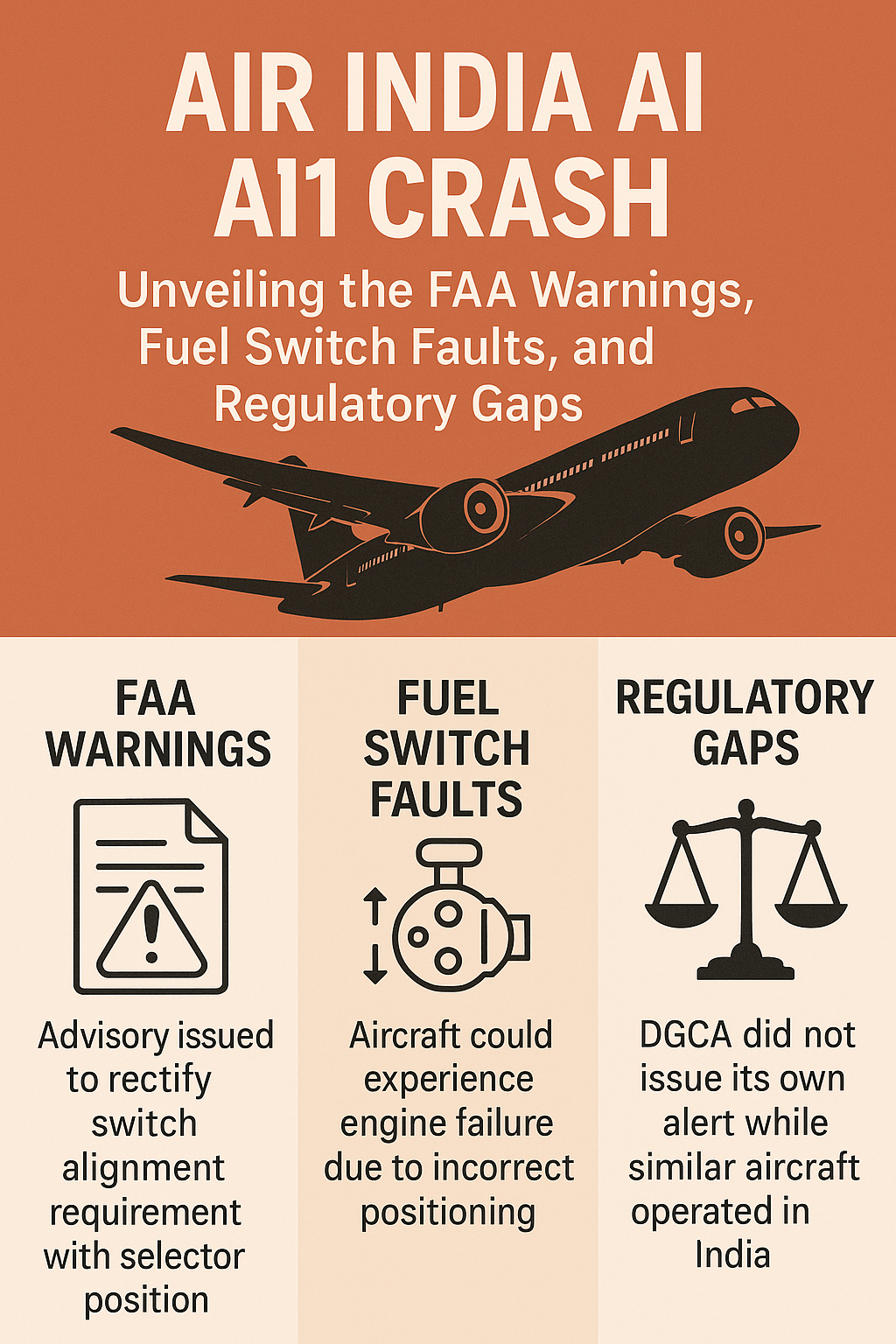In the wake of the Air India 171 crash, aviation communities and the public worldwide are searching for answers. In a special episode of Ask the Captain, veteran pilot Captain Steve addresses the key technical questions raised about the crash. From the cause of thrust loss to RAT deployment and flap configurations, here’s a complete decoded breakdown of the expert insights.
How Did the Sole Survivor Make It?
- The survivor was seated just in front of the wing spar, one of the strongest points in the aircraft.
- The wing spar absorbed much of the impact, possibly sparing the force where the survivor sat.
- Captain Steve calls it “nothing short of a miracle.”
Landing Gear: Why Was It Down?
- Video shows the gear remained down, but evidence suggests the pilots did raise the gear handle.
- However, due to power loss, the hydraulic/electrical system failed to fully retract it.
- The gear wheels were angled backward, a sign the system may have partially attempted retraction.
What Is the RAT (Ram Air Turbine) and Why Does It Matter?
- The RAT is an emergency device that deploys during complete engine or electrical failure.
- It provides minimal hydraulic and electrical power, enabling limited control and communication.
- RAT deployment in this case strongly suggests dual engine failure.
Loud Bang After Takeoff: What Was It?
- The sole survivor reported a loud bang 30 seconds after takeoff.
- Likely causes:
- RAT deployment noise as it slams into the airstream.
- Structural damage or part of the aircraft hitting an object.
- Lights also reportedly flickered, reinforcing the RAT theory.
🛬 Flap Configuration: Were the Wings Clean?
- Early speculation of premature flap retraction has been dismissed.
- Wreckage photos show:
- Leading-edge slats deployed
- Flaps set at ~5°, confirming proper takeoff configuration.
- Flaps were not the cause of lift loss—thrust loss was.
High Temperatures and Vapor Lock?
- Reported temperatures: 37°C to 43°C.
- High heat can disrupt engine airflow or cause fuel vaporization (vapor lock).
- Vapor lock may lead to:
- Fuel turning into gas
- Loss of engine thrust
- It’s rare, but not impossible under extreme heat and pressure.
The Mayday Call: What Did It Reveal?
- Pilots radioed “no thrust achieved” shortly after takeoff.
- That suggests both engines lost power during climb-out.
- Combined with RAT deployment and loss of lift, this aligns with a catastrophic dual engine failure.
🛫 Takeoff Performance: Did They Use the Whole Runway?
- Witnesses reported dust clouds as the aircraft lifted off.
- Captain Steve explains this is likely due to:
- Thrust vector angle
- Dry conditions, not necessarily overrun.
- Engines were producing thrust at that moment—but failed soon after.
First Officer’s Experience: Was It Enough?
- Reported to have 1,100 flight hours.
- Below the 1,500-hour U.S. minimum, but may be standard under different regulations.
- Captain Steve praises the professionalism and training of the crew.
RAT Deployment: What Does It Confirm?
- On the 787, RAT is deployed for:
- Dual engine failure
- Major electrical or hydraulic failure
- In this case, the only failure that causes lift loss is engine failure.
- Therefore, RAT + wing stall = confirmed engine flameout.
Was It a Stall?
- The aircraft mushed into the ground after lift was lost.
- Classic signs of stall seen:
- Nose drop
- Tail sag
- Loss of airspeed
- Thrust loss led to loss of energy in the wings, inducing stall.
Fuel Contamination or Vapor Lock?
Three possible causes for fuel starvation:
- Fuel control levers off — not plausible.
- Contaminated fuel (water, particles) — extremely rare, but possible.
- Vapor lock — high temperature may have turned fuel to vapor, starving engines.
All are speculative, but not ruled out.
Did the Pilots Have Time to Save the Aircraft?
- The entire sequence—from rotation to crash—lasted under 60 seconds.
- Dual engine restart procedures require more altitude and time.
- Not enough time for checklists or recovery.
Final Words on the Crew
Captain Steve’s closing thoughts:
“These were some of the best-trained pilots in the world.
To send a mayday in English under pressure — that shows presence of mind.”
A 100-Billion-to-One Event
This tragedy was an extraordinarily rare event. While investigations continue, early signs point to a dual engine flameout, likely due to mechanical or environmental causes. As the aviation community continues to analyze and learn, lessons will be implemented to ensure this never happens again.






